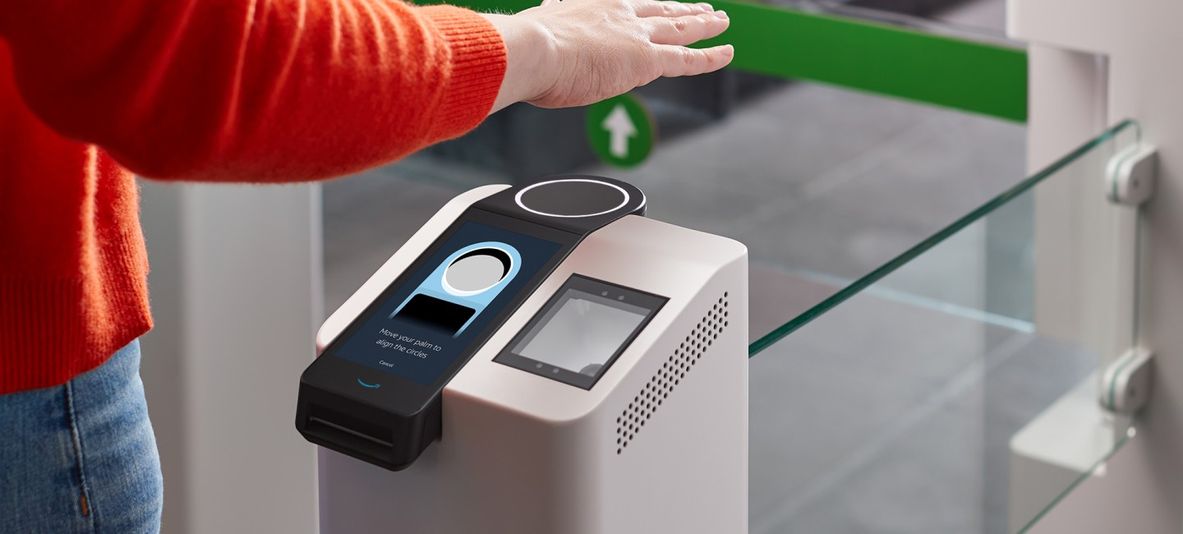Technology
Amazon wants to copy your palm for contactless payment. Don’t do it.

Amazon is coming for your hands.
Not content to put a flying surveillance drone inside customers’ homes, the surveillance behemoth on Tuesday announced a plan to scan and store the “unique palm signature” of an untold number of Americans. Dubbed Amazon One, the company hopes the network of scanners will one day serve as an all-purpose form of identification.
You should absolutely not participate.
Since the introduction of Apple’s Touch ID in 2013, followed by Face ID in 2017, many people have become desensitized to using biometric data as a form of identification. While those forms of biometric ID have their own drawbacks, Amazon One is different. Designed as a contactless payment and authentication system, Amazon One relies on scanned images of customer hands.
Unlike Face ID, which stores “mathematical representations” of your face on your personal device, Amazon One’s scanner sends “images” to the cloud. It is there, the blog post reads, that the company “[creates] your palm signature.”
Amazon envisions a broad use for Amazon One — a use not limited to the two Seattle Amazon Go stores where the tech launched Tuesday.
“In most retail environments, Amazon One could become an alternate payment or loyalty card option with a device at the checkout counter next to a traditional point of sale system,” explains the company’s blog post. “Or, for entering a location like a stadium or badging into work, Amazon One could be part of an existing entry point to make accessing the location quicker and easier.”
Paper forfeits to dystopian rock.

Evan Greer, deputy director of Fight For the Future, a nonprofit digital rights group, cautioned that participating in programs like Amazon One opens people up to possible privacy violations down the road.
“Handing your sensitive biometric information to private corporations is a terrible idea, especially since there are almost no laws in place that hold them accountable for keeping that information safe, or prevent them from abusing it or selling it to others,” she explained.
Greer further noted that, like previous commercial attempts at reducing payment “friction” before it, Amazon One’s likely downstream effects won’t be evenly distributed.
“Low income people and people of color, who are already disproportionately subjected to invasive corporate and government data collection, are most harmed by these surveillance-based payment ‘alternatives,'” she warned.
Amazon made repeated nods to customer privacy in its Tuesday blog post, promising that it “[takes] data security and privacy seriously” and that dissatisfied Amazon One users can “request to delete data associated with Amazon One[.]”
The question it fails to sufficiently answer, however, is why anyone should trust a company like Amazon — which, it’s worth noting, is no stranger to privacy scandals — with their biometric data.
SEE ALSO: Amazon wants to put a Ring drone inside your home and LOL WTF?
When Amazon mistakenly disclosed customers’ email addresses in 2018, those affected customers could simply abandon those addresses and move on. Swapping out your hands, however, might prove to be a tad more difficult.
-

 Entertainment7 days ago
Entertainment7 days agoEarth’s mini moon could be a chunk of the big moon, scientists say
-

 Entertainment7 days ago
Entertainment7 days agoThe space station is leaking. Why it hasn’t imperiled the mission.
-

 Entertainment6 days ago
Entertainment6 days ago‘Dune: Prophecy’ review: The Bene Gesserit shine in this sci-fi showstopper
-

 Entertainment5 days ago
Entertainment5 days agoBlack Friday 2024: The greatest early deals in Australia – live now
-

 Entertainment4 days ago
Entertainment4 days agoHow to watch ‘Smile 2’ at home: When is it streaming?
-

 Entertainment3 days ago
Entertainment3 days ago‘Wicked’ review: Ariana Grande and Cynthia Erivo aspire to movie musical magic
-

 Entertainment3 days ago
Entertainment3 days agoA24 is selling chocolate now. But what would their films actually taste like?
-

 Entertainment3 days ago
Entertainment3 days agoNew teen video-viewing guidelines: What you should know
















